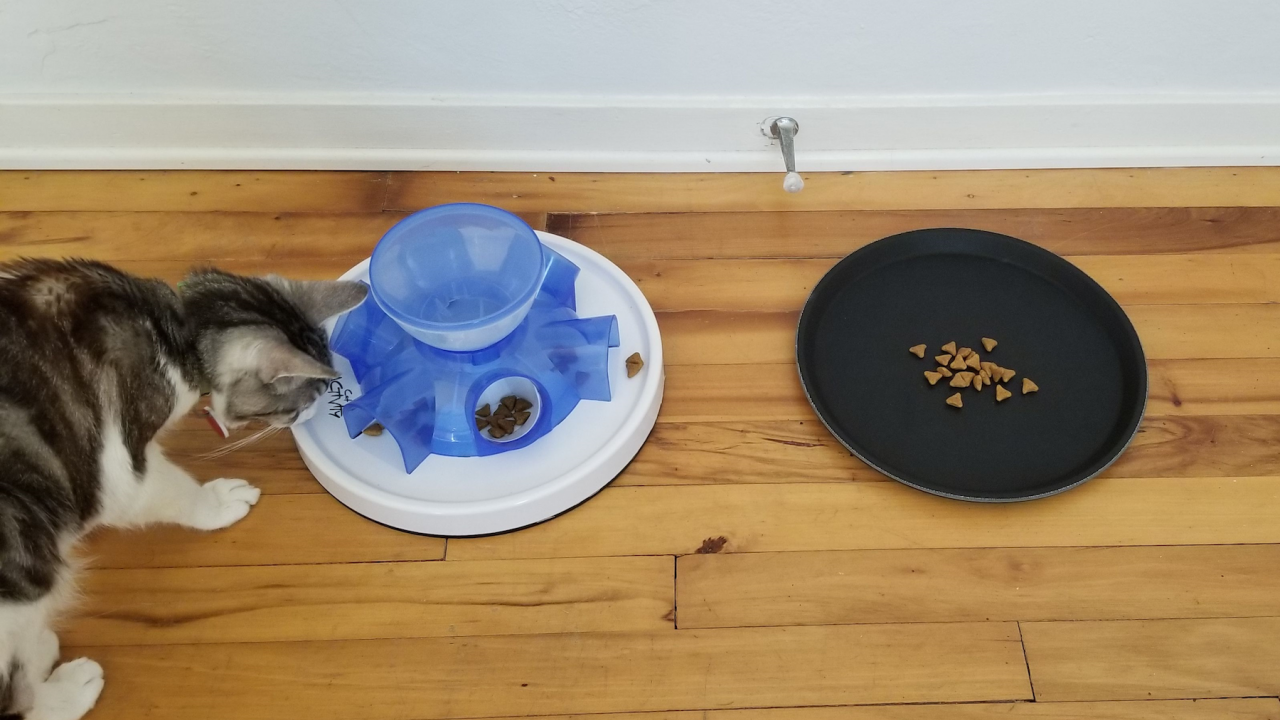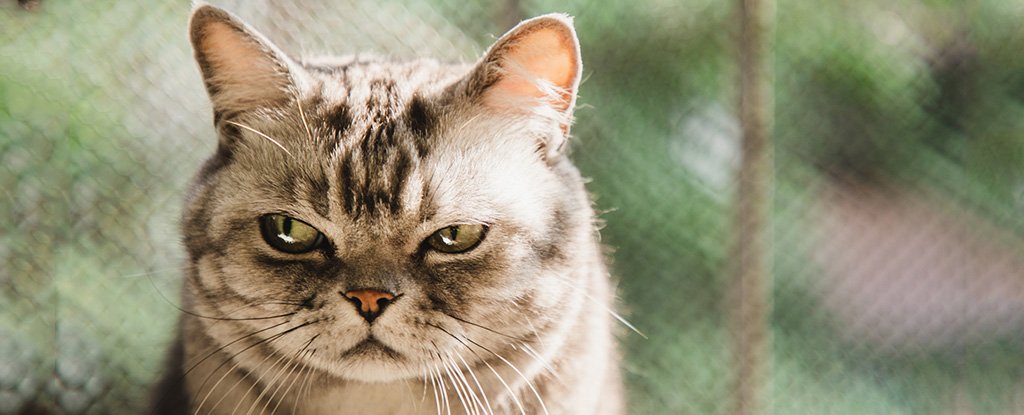Products You May Like
Unlike numerous other animals, cats show a strange unwillingness to work for their food.
When given the choice between a freely available meal and a meal trapped inside a puzzle, scientists have found most animals, such as dogs, bears, pigeons, pigs, goats, mice, rats, monkeys and other primates, prefer to work for their food – a concept known as contrafreeloading.
Cats stand out amongst other animals in that they seem to favor an easy meal; however, that’s not necessarily because they’re lazy, as we’ll explain below.
When researchers provided a small sample of indoor cats with a food puzzle and a tray of food in a home environment, the pets ate more food from the free tray than from the puzzle. Even the most energetic individuals preferred to stick to the easy meal, according to activity sensors they wore during the study.
“It wasn’t that cats never used the food puzzle, but cats ate more food from the tray, spent more time at the tray and made more first choices to approach and eat from the tray rather than the puzzle,” explains Mikel Delgado, a cat behaviorist at the University of California Davis.
Eight cats never even bothered to touch the puzzle, despite having the opportunity to do so for 30 minutes, and none of the cats ate more food from the puzzle than from the open tray.
 (Mikel Delgado/UC Davis)
(Mikel Delgado/UC Davis)
The results add weight to the findings from a small lab study, conducted in 1971, which first revealed a lack of contrafreeloading among cats.
In this historic experiment, six domesticated cats were trained to operate a food dispenser. They were then given the choice between the food puzzle and a free bowl of kibble in a laboratory setting.
Unlike every other animal that had been tested in similar ways, the cats in these experiments showed a clear preference for the free meal.
Now, it seems like even in a home setting, these creatures make the same choices, regardless of their sex, age or previous puzzle experience.
“There is an entire body of research that shows that most species including birds, rodents, wolves, primates – even giraffes – prefer to work for their food,” says Delgado.
“What’s surprising is out of all these species cats seem to be the only ones that showed no strong tendency to contrafreeload.”
Why that is remains a mystery. It’s not that cats don’t like food puzzles. Most cat owners know their pets enjoy working for a reward when it’s trapped inside a tricky container, and it’s good for their enrichment, too.
Given how active the cats in the new study were, laziness also seems like the wrong explanation.
Perhaps domestication has something to do with it. In a home setting, where food is easily available, cats might be less driven to explore and hunt in their environment. After all, conserving energy is something cats do really well. Yet other domesticated pets and captive animals in similar situations still prefer to tackle the harder meal over the easier one.
Another hypothesis may have to do with how cats have evolved to obtain their meals. Unlike foraging animals that search for their food, cats are predators that ambush their prey. A food puzzle might therefore not be the best way to stimulate their interest.
That said, in 2016, Delgado published another study that found food puzzles can help cats with weight loss, anxiety and litter box training. That suggests food puzzles really are good for their brains and may help them develop, although this is a relatively new area of research.
With just 17 cats providing sufficient data by the end of Delgado’s more recent study, the sample size is small; the team also did not control for the hunger of the cats tested. That said, given how much the cats ate in the experiments, the authors think it’s unlikely the pets were uninterested in the food provided.
Beyond simple curiosity, researchers say it’s worth finding out why cats do not seem to prefer a food puzzle over a free meal. The answer could help us appease the curiosity of our cats when they are stuck indoors, to increase their wellbeing all around.
“Understanding contrafreeloading is important for captive and domestic animal welfare as foraging enrichment is a frequently used tool to provide choice and mental stimulation,” the authors write.
“The effects of such enrichment on the behavior of captive animals are rarely tested.”
The study was published in Animal Cognition.
